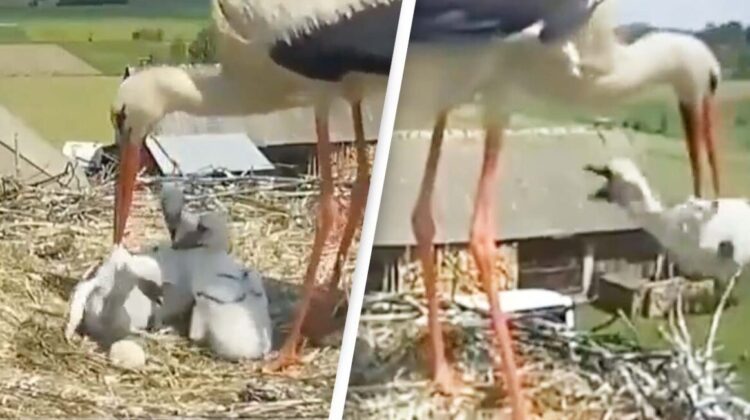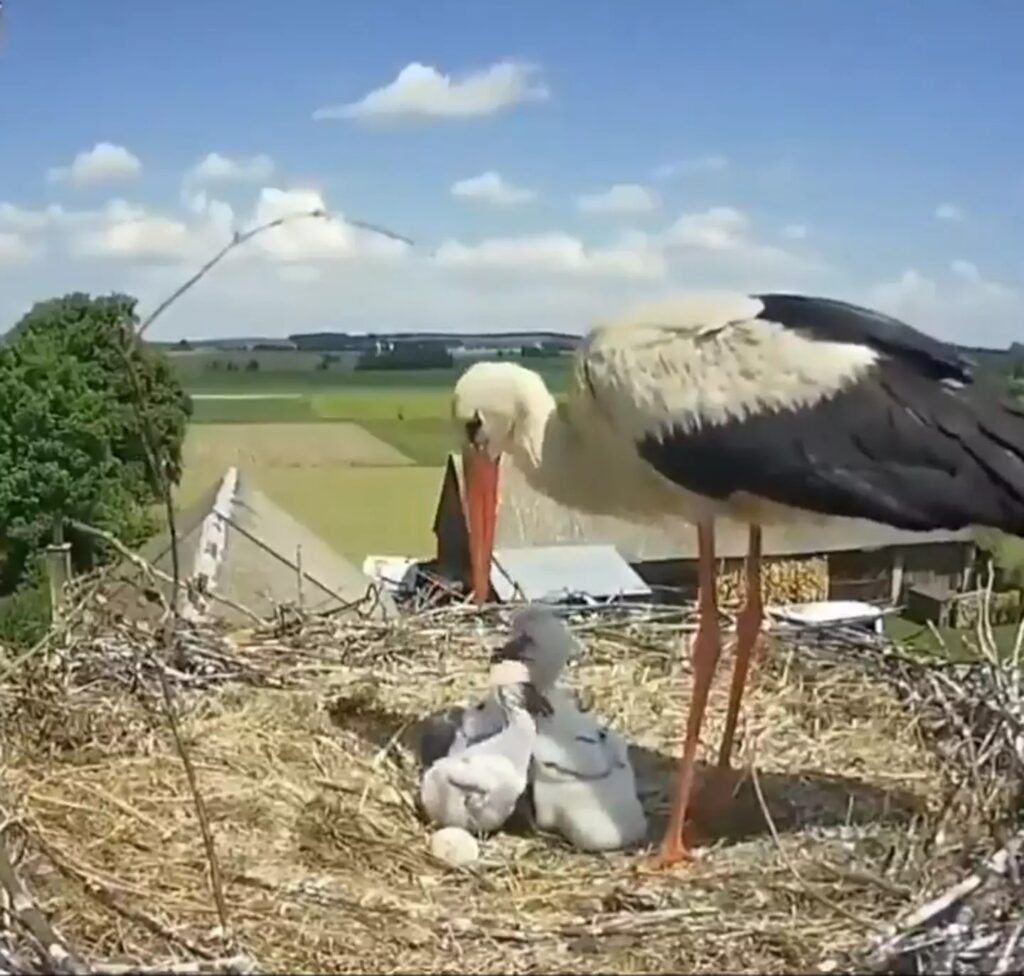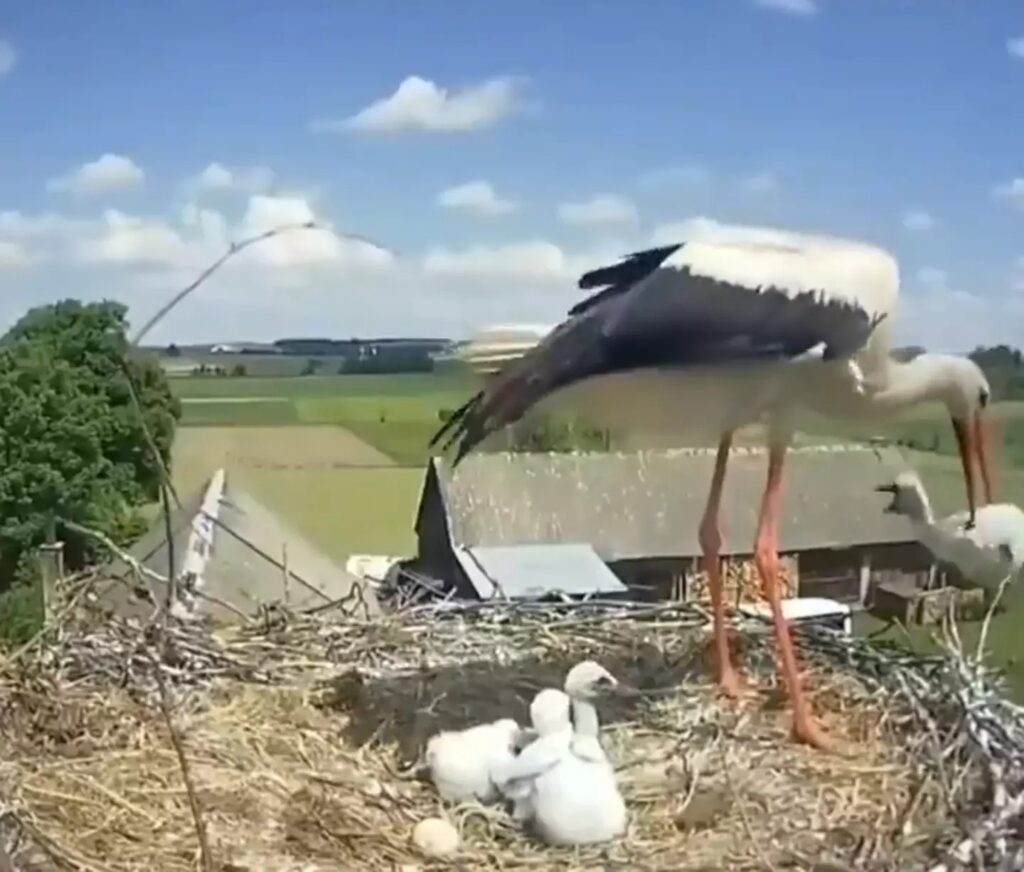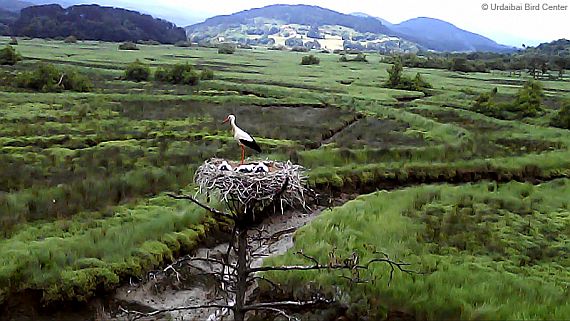
In the tranquil expanse of the Urdaibai Reserve, a scene of nature’s brutality unfolded before the eyes of onlookers at the Urdaibai Bird Center. In a white stork nest, nestled amidst the branches, a chilling act of parental infanticide transpired, revealing the harsh realities of survival in the avian world.
The sequence of events unfolded swiftly as the adult stork unleashed a flurry of blows upon one of its own offspring. With each strike, the young stork’s fate was sealed, culminating in its expulsion from the nest. Despite valiant efforts by members of the UBC to rescue the injured bird, its wounds proved fatal, echoing the stark truth of nature’s unforgiving ways.

In birds, parental infanticide serves as a strategic means of conserving energy and maximizing the chances of survival for the remaining offspring. By eliminating the individual deemed least likely to thrive, adults seek to allocate resources more efficiently, ensuring the viability of the brood as a whole. This behavior, though distressing to witness, is not uncommon among avian species, with examples documented in the Eurasian coot, Mexican gull, and both white and black storks.

What sets the events at Urdaibai apart is the age of the victim—a stark departure from the norm observed in such cases. Typically, parental infanticide occurs in the early stages of development, with the smallest and weakest offspring targeted. However, in this instance, the victim was over a month old, nearly fully grown—a deviation from the expected pattern.

The underlying cause of this deviation may lie in the intricate dynamics of the stork family unit. It is speculated that the sudden disappearance of one of the adults, responsible for provisioning the chicks, left the surviving parent with an insurmountable challenge. Faced with the daunting task of single-handedly caring for three dependent offspring, the remaining stork resorted to the ultimate sacrifice: eliminating one of its own to ensure the survival of the others.
While the act may seem harsh and unfathomable to human sensibilities, it underscores nature’s innate wisdom and adaptability. In a world where resources are finite and survival is precarious, every decision is a calculated one, driven by the imperative to perpetuate life. In this instance, the sacrifice of one life was deemed necessary to safeguard the future of the remaining brood—a testament to the harsh yet pragmatic realities of the natural world.
As observers grapple with the complexity of such events, they are reminded of nature’s intrinsic resilience and the delicate balance that sustains life. In the grand tapestry of existence, every act, no matter how seemingly cruel, serves a purpose—an immutable truth that underscores the profound intricacies of the natural order. And amidst the chaos of existence, nature’s wisdom prevails, guiding the course of life with unwavering precision.

Leave a Reply